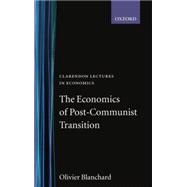The Economics of Post-Communist Transition
, by Blanchard, Olivier- ISBN: 9780198293996 | 0198293992
- Cover: Paperback
- Copyright: 7/29/1999
Transition in Central and Eastern Europe, as Blanchard points out, has adhered to a U-shaped response in terms of economic output--that is, a sharp decline in output followed by a recovery. Today, most of the countries of Central Europe seem to have enjoyed a steady upswing, while most Eastern European nations still appear to be near the bottom of the U. This book traces the courses, causes, and implications of this pattern, arguing that two basic mechanisms dominate such transition. The first is the reallocation between the state and private sectors, with a contraction of activities in the former and an expansion in the latter. The second is the restructuring of the old state sector, with the opportunity for large improvements in productivity. Against this background, the book's focus shifts to three particular factors: the adjustment of employment and wages in state firms to the initial shock of reduced demand for their goods; the dynamics of restructuring and privatization; and the relationship between reallocation, restructuring, and traffic in the labor market. The final section summarizes the discussion, and in doing so builds a general equilibrium model as a preliminary to the analysis of three sets of issues: the role of unemployment benefits and privatization 'ules; the interaction between transition and fiscal policy; and the evolution of the support for reform. The model is then used to address the thorny issue of the ideal speed for economic reform. The latest offering from a distinguished expert on the economics of transition, this is one of the first book-length analyses of the process of moving from a centrally-planned to a market economy.






